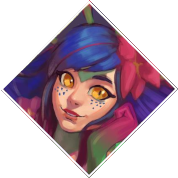The specifics of how your grade after a game is calculated are not public. This is to keep players from gaming the system and abusing cheesy strategies to farm S ranks. However, we still have some information on what exactly contributes to your rank. We'll explore what variables can influence your grade, so you can make the most out of your games and mastery progression.
Mastery grades in League of Legends serve as a measure of a player's performance in a specific game. These grades reflect how well a player has executed their role and champion compared to other players in their region. The grading system is multifaceted, taking into account various performance metrics tailored to the champion and role being played. They are also graded on a curve, so your metrics will be compared to the average player in the same champion, in the same region, in the same role. This means a toplane Irelia will have much more competition with mastery grades compared to a toplane Anivia, or any other offmeta pick.
For top and mid laners, the requirements to achieve a high mastery grade are quite stringent. These roles generally have the highest CS per minute requirements. To achieve an S grade, players often need:
- High CS per minute: Top and mid laners’ mastery grades favor high CS per minute than other roles, even ADC. A range of 5-7 CS per minute is the ideal.
- KDA of 2+: Maintaining a good KDA is crucial. A KDA of 2 or higher is typically necessary for an S grade. This is
- Kill Participation of 50%: Active involvement in team fights and skirmishes is essential. A 50% kill participation indicates significant contribution to the team's overall kill count.
- Objective Participation: Players need to participate in taking down objectives, including towers, dragons, and barons. The numbers are a bit nebulous, but shooting for 50% objective participation (meaning, an assist on 50% of neutral objectives) is a good number to go for.
- Vision Score: A decent number of wards placed or destroyed helps enhance the team's map control. Buying 2-3 pinks over the course of the game should be just fine.
- Damage Taken vs KDA: On most tanks, it has a strong effect to have a high amount of damage taken while still having a high KDA.
Jungle

Junglers have unique requirements tailored to their role:
- Lower CS per minute: Junglers are not primarily judged on CS. You shouldn’t ignore jungling, but just know that it will not be weighed as heavily as your objective and kill participation.
- High Kill Participation: Active involvement in ganks and team fights is crucial. KP% for junglers is the heaviest weight for mastery grades, along with objective participation.
- Highest Objective Participation: Junglers must participate in securing neutral jungle objectives. This is relatively straightforward to achieve, but keep in mind this means participating in all objectives, not the ones your team took. If 6 dragons were taken in a particular game, and your team got 2 of them against the enemy team’s 4, this counts as only participating in 2 out of 6 dragons for a very low objective participation of 33%. Shoot for the 66-75% range.
Although towers are usually referred to as objectives, they are not factored for objective participation metrics.
ADC

- CS per minute: While still important, ADCs can afford a slightly lower CS per minute compared to top and mid laners.
- Higher Kill Participation: ADCs are expected to be more involved in fights, with a higher kill participation requirement, although not as high as junglers. This can be hard to control and be ahead of, since you can be playing safe weakside and miss out on kill participation on the other side of the map if your toplaner or jungle gets too ahead.
- Better KDA: ADCs need a slightly better KDA than other roles, around 2.1. Minimizing deaths is crucial, even more so than other lanes.
- Objective Participation: Involvement in taking down towers and other objectives remains as important as for top and mid. Shoot for 50% participation.
Support

- Lowest CS per minute: Supports have the lowest weight for CS per minute. Farming will not help you increase your grade.
- Highest Kill Participation: Supports need to be highly involved in team fights to increase their grade. They tie with junglers on having the highest weight on KP% into their grade.
- Vision Score: Supports must place and destroy a significant number of wards to maintain map control.
- Highest KDA: Supports typically need a very high KDA, usually 2.5 or higher. Not dying is your biggest way of increasing your grade.
- Crowd Control Score: A metric of how long enemies have been affected by your CC. This is a relatively heavy weight for your performance. Supports with an easier access to CC will have a harder time keeping up with the curve.
Under the Hood: the Math and Premade Bonuses
After an eligible game, the player receives a grade based on how well they performed compared to all other players in the region that have played the champion-position combination (e.g. Vel'Koz bottom lane will only be compared to other Vel'Koz bottom lane players). They are then awarded mastery points (MP) based on that grade, the team's grades, and their premade party's size (if applicable).
A higher grade means the player will earn more MP. The possible grades are (from highest to lowest): S+, S, S-, A+, A, A-, B+, B, B-, C+, C, C-, D+, D, D-.
The amount of MP awarded (and therefore your grade in that game) factors in your individual performance under the previously stated factors, along with your overall team’s performance (how many objectives your team was able to get, how many towers are left standing, who won the game, etcetera). Then, a premade bonus is awarded, giving you higher MP for playing with a premade group, scaling with size. So we’re left with the following equation:
MP Awarded = (Individual Performance + Team Performance) * Premade Bonus
The premade bonuses are as follows:
| Premade Size | Premade Bonus |
|---|
| No premades | 1.0 (No bonus) |
| Party of two | 1.02 (+2%) |
| Party of three | 1.04 (+4%) |
| Party of four | 1.06 (+6%) |
| Party of five | 1.1 (+10%) |
Summary: Tips and Extra Notes
To maximize your chances of earning an S grade, consider the following:
- Maintain a Good KDA: Aim for a KDA ratio of at least 2.0. Rather than getting more kills, try to focus more on minimizing deaths.
- Farm Efficiently: High CS is crucial, particularly for top, mid, and ADC roles. Aim for at least 5-7 CS per minute on these roles. The higher the betterl
- Participate: High damage output, damage taken and takedowns all positively impact your grade. Try to be present for skirmishes and teamfights, and try to go for less solo kills.
- Ward Placement and Destruction: Even if you’re not a support, your vision score should be between 10 or 20, depending on the length of the game.
- Objective Control: Actively participate in securing dragons, barons, and towers. Try to show up to every objective, or be doing something that enables your team to get the objective instead.
- Game Length and Performance: The length of the game and how well you perform relative to the game duration can influence your grade. Very few deaths in a long game will be incredibly impactful for your performance.
And some notes to keep in mind:
- The mastery grading system is not influenced by matchmaking rating (MMR).
- Performance uses a mix of core game metrics that Riot is confident cannot be abused through means such as exclusively farming or spam warding, which would result in players ignoring the majority of the game and degrade its quality.

